Submitted by chandra on Thu, 2015-11-12 09:48
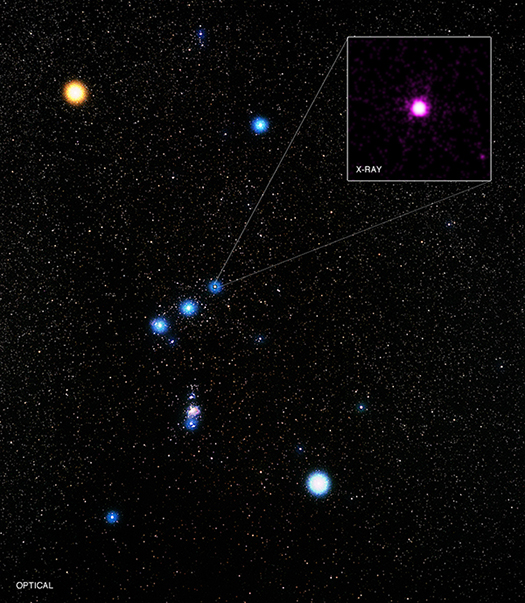
One of the most recognizable constellations in the sky is Orion, the Hunter. Among Orion's best-known features is the "belt," consisting of three bright stars in a line, each of which can be seen without a telescope.
The westernmost star in Orion's belt is known officially as Delta Orionis. (Since it has been observed for centuries by sky-watchers around the world, it also goes by many other names in various cultures, like "Mintaka".) Modern astronomers know that Delta Orionis is not simply one single star, but rather it is a complex multiple star system.
Submitted by chandra on Wed, 2015-10-21 10:03
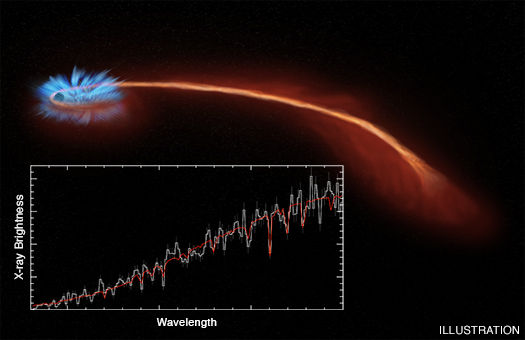
Astronomers have observed material being blown away from a black hole after it tore a star apart, as reported in our press release. This event, known as a "tidal disruption," is depicted in the artist's illustration.
Submitted by chandra on Thu, 2015-10-08 09:27
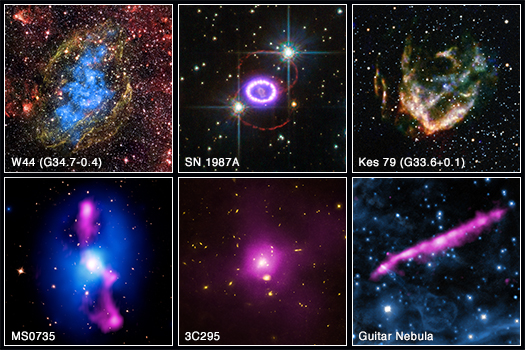
Archives, in their many forms, save information from today that people will want to access and study in the future. This is a critical function of all archives, but it is especially important when it comes to storing data from today's modern telescopes.
Submitted by chandra on Wed, 2015-09-30 11:02

Galaxy clusters are often described by superlatives. After all, they are huge conglomerations of galaxies, hot gas, and dark matter and represent the largest structures in the Universe held together by gravity.
Submitted by chandra on Wed, 2015-09-23 00:17
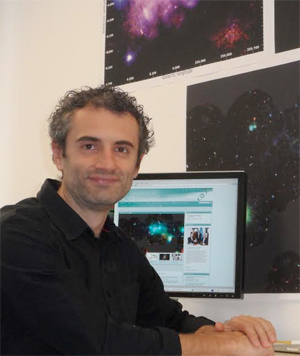 Gabriele Ponti
Gabriele PontiDr. Gabriele Ponti is the Marie Sklodowska-Curie EU Research Fellow at the Max Planck Institute for Extraterrestrial Physics in Germany. Prior to that, he was a post-doctoral fellow at the University of Southampton in the UK, after spending a year at Cambridge University’s Institute of Astronomy. Dr. Ponti earned his Ph.D. from Bologna University in Italy before moving on to the Laboratories Astro-Particule et Cosmologie in Paris. His doctoral thesis topic was studying relativistic effects in bright active galactic nuclei and he has been interested in this area since then.
As a boy, I read about the existence of black holes for the first time. I still remember the fascination of trying to grasp the physical concepts behind one of the weirdest manifestations of nature.
Black holes produce an enormous gravitational pull, as a consequence of being extremely compact: a significant amount of mass concentrated in a very small volume.
Submitted by chandra on Wed, 2015-09-23 00:06
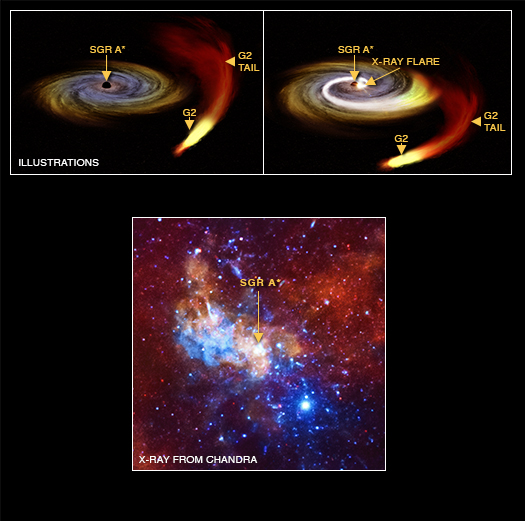
Three orbiting X-ray telescopes have been monitoring the supermassive black hole at the center of the Milky Way galaxy for the last decade and a half to observe its behavior. This long monitoring campaign has revealed some new changes in the patterns of this 4-million-solar-mass black hole known as Sagittarius A* (Sgr A*).
Submitted by chandra on Thu, 2015-09-17 10:18
 Alicia Goldstein
Alicia GoldsteinWe welcome Alicia Goldstein, who was an intern at the Chandra X-ray Center this past summer, as our guest blogger. Ms. Goldstein, originally from Ellicott City, MD, is currently a senior at the University of Maryland, Baltimore County where she majors in mechanical engineering. Prior to this summer, Ms. Goldstein was an intern at NASA’s Goddard Space Flight Center and lists working for NASA as her ideal career goal.
This summer, I worked on two separate projects. The first involved the development of a Python code that would display the defined and predicted positions and velocities of Chandra, and the second involved the analysis of the periods of the variable stars in the Chandra Variable Guide Star Catalog,, or VGuide, database. The coding project involved interpreting and manipulating previous code, as well as creating entirely new sections. Given an input of two data files, the code was able to output a file with plots of the predicted and defined velocities and positions of the spacecraft.
Submitted by chandra on Mon, 2015-08-31 11:32
Welcome to the latest installment of the Carnival of Space, a weekly round up of astronomy news co-hosted on various space science blogs. It’s a pretty big Universe out there so let’s get started!
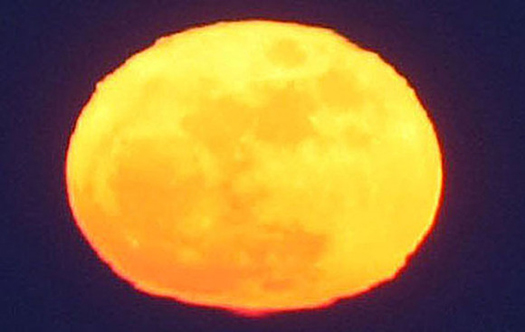
Submitted by chandra on Wed, 2015-08-26 09:55
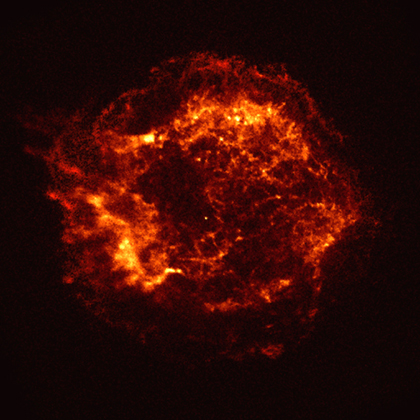
Sixteen years ago today, the first images from the newly-launched Chandra X-ray Observatory were released to the public. While these images were spectacular themselves, they also represented the promise of the amazing things that Chandra might be able to do in the future.
Submitted by chandra on Wed, 2015-08-26 09:23
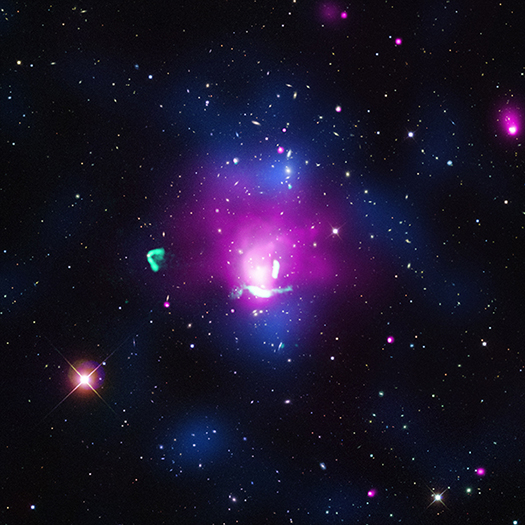
Astronomers have found evidence for a faded electron cloud "coming back to life," much like the mythical phoenix, after two galaxy clusters collided. This "radio phoenix," so-called because the high-energy electrons radiate primarily at radio frequencies, is found in Abell 1033. The system is located about 1.6 billion light years from Earth.
Pages